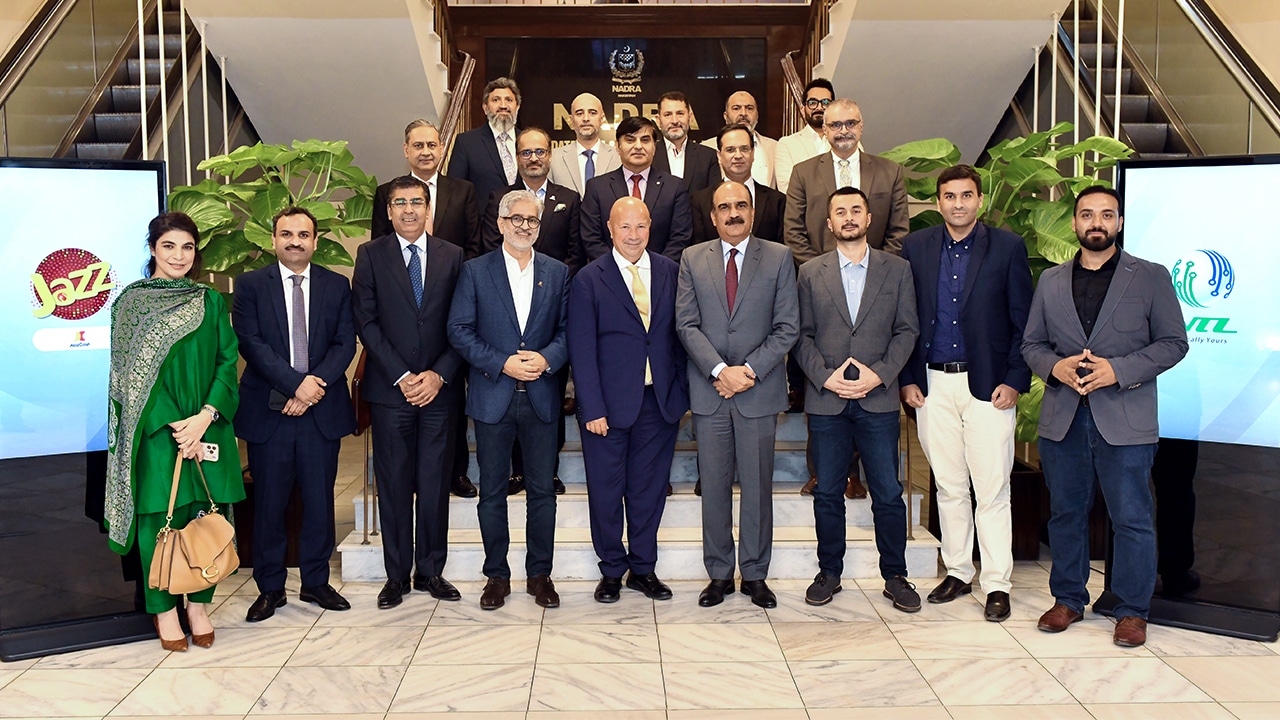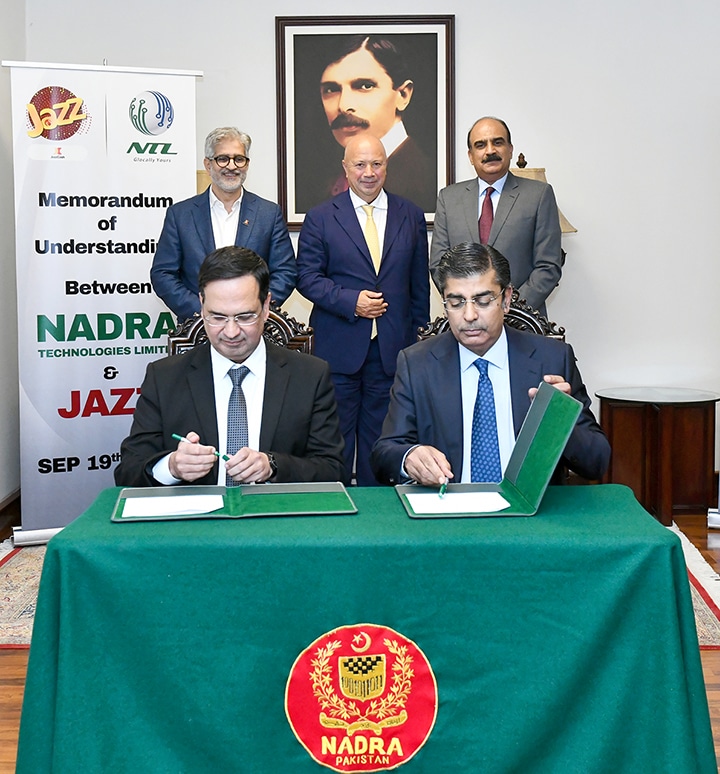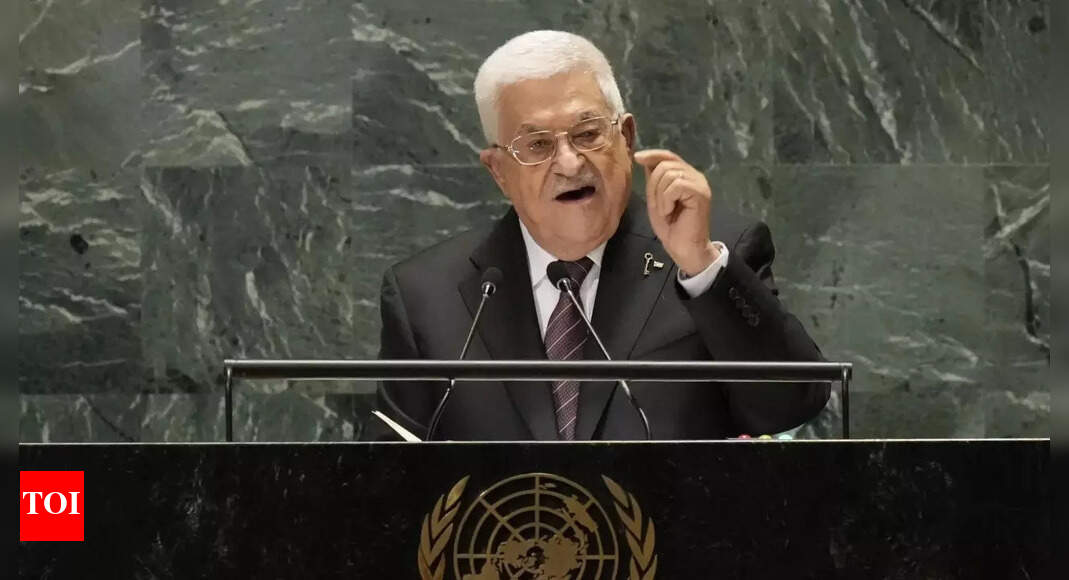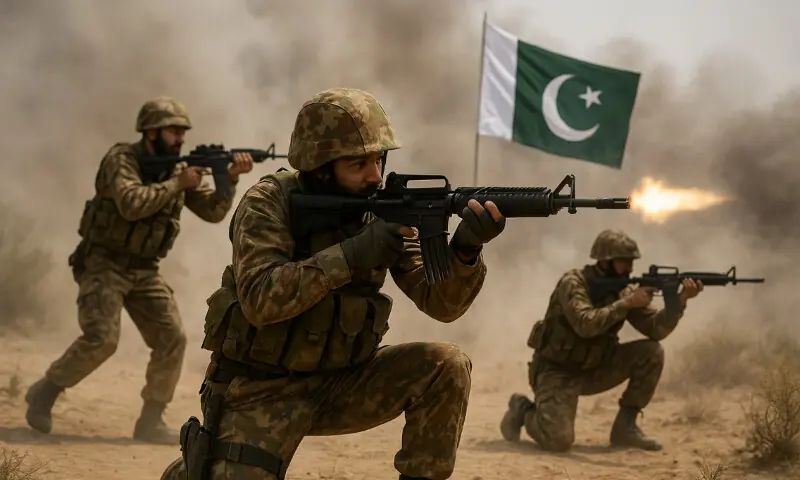- Jannik Sinner Foundation officially unveiled in Milan: ‘The project is finally alive’ ATP Tour
- Jannik Sinner launches his new project: all the details Tennis World USA
- Jannik Sinner launches Foundation to support education and youth sports tennismajors.com
- Jannik Sinner’s Parents and Brother Make Rare Appearance in Milan As the Italian Officially Presents His Foundation NewsBreak: Local News & Alerts
Blog
-
Jannik Sinner Foundation officially unveiled in Milan: 'The project is finally alive' – ATP Tour
-

Jazz, NADRA Technologies Limited (NTL) Partner to Advance Digital Services for Pakistanis
Jazz, Pakistan’s leading digital operator, has signed a Memorandum of Understanding (MoU) with NADRA Technologies Limited (NTL), the commercial arm of the National Database and Registration Authority, to expand access to digital citizen services. The agreement marks a significant step toward leveraging technology to enhance convenience, inclusion, and trust throughout Pakistan’s digital ecosystem.

Through this collaboration, Jazz and NTL aim to simplify how citizens and businesses interact with essential services, enhancing financial inclusion and e-government facilitation. The partners will leverage their respective strengths to build secure, accessible, and reliable solutions, creating socio-economic opportunities, empowering more Pakistanis to join the digital economy, and reinforcing the country’s position as a regional leader in digital transformation.
Speaking at the signing, Aamir Ibrahim, CEO of Jazz, said: “This partnership with NADRA Technologies Limited (NTL) reflects Jazz’s ServiceCo vision – moving beyond connectivity to enable platforms that improve lives and livelihoods. By bringing together Jazz’s digital infrastructure and NTL’s trusted identity services, we are creating a stronger foundation for inclusive access to essential services and digital financial tools for all Pakistanis.”
This strategic collaboration manifests the shared commitment of Jazz and NTL to advance the Government of Pakistan’s Digital Pakistan agenda. It will accelerate the nation’s digital transformation, foster economic resilience, and expand inclusive access to essential services for millions of citizens.
Continue Reading
-
Safe havens and spillovers – Pakistan Today
- Safe havens and spillovers Pakistan Today
- New low in Pak-Afghan ties Dawn
- Cross-border terrorism intolerable, UNSC told The Express Tribune
- Pakistan urges Afghan Taliban to choose a side: Islamabad or militants Nikkei Asia
- Pakistan’s Terrorism Irony: Points Finger At Afghanistan In UN While Terror Thrives On Its Own Soil | Analysis Zee News
Continue Reading
-

Leonardo DiCaprio, Chase Infiniti, Benicio del Toro Promote New Movie ‘One Battle After Another’ in Mexico City!: Photo 5206020 | Benicio Del Toro, Leonardo DiCaprio Photos | Just Jared: Celebrity News and Gossip
About Photo #5206020: Leonardo DiCaprio is hard at work promoting his new movie! The 50-year-old Oscar-winning actor joined co-stars Benicio Del Toro and Chase Infiniti at the photocall…Read More Here
Posted to
Benicio Del Toro,
Chase Infiniti,
Leonardo DiCaprio,
One Battle After Another,
Paul Thomas Anderson
Continue Reading
-

Official announcement: Lotte Keukelaar
Real Madrid C. F. and AFC Ajax have reached an agreement for the transfer of the player Lotte Keukelaar, who will be linked to our club for the next five seasons, until June 30, 2030.
Keukelaar, 19, has already been called up to the Netherlands senior national team after progressing through all of the age groups.
After two years in the Ajax academy, she became part of the first team in 2023 and won the Dutch Cup with them in 2024.Continue Reading
-
Sawe, Wanjiru and Fikir have high hopes at Berlin Marathon – worldathletics.org
- Sawe, Wanjiru and Fikir have high hopes at Berlin Marathon worldathletics.org
- Kenya’s Sabastian Sawe targets his “fastest race” in Berlin Marathon debut Olympics.com
- Is this the man to run a race-legal sub-two marathon? Meet Sabastian Sawe Runner’s World
- ‘It Is Possible’ – Sabastian Sawe on Carrying Forward Kelvin Kiptum’s Unfinished Sub-Two Dream in Berlin Pulse Sports Kenya
- Sebastian Sawe takes bold anti-doping step ahead of Berlin Marathon Citizen Digital
Continue Reading
-
4 terrorists killed in operation in SW Pakistan
ISLAMABAD, Sept. 19 (Xinhua) — Pakistani security forces killed four terrorists during an intelligence-based operation in the country’s southwest Balochistan province, the military said Friday.
The Inter-Services Public Relations (ISPR), the media wing of the Pakistan Army, said in a statement that the operation was carried out on Sept. 17 in Khuzdar district following reports about the presence of terrorists.
Security forces engaged the terrorists’ hideout, killing four in an intense exchange of fire, the statement said, adding that weapons, ammunition and explosives were seized from the site.
According to the ISPR, the slain terrorists had been involved in multiple attacks in the region.
A clearance operation is underway in the area to hunt any remaining terrorists, the statement added, reaffirming the resolve of Pakistan’s security forces to eliminate terrorism from the country. Enditem
Continue Reading
-

Palestinian prez can speak in UNGA: India votes in favour; UN passes motion letting Mahmoud Abbas address virtually | India News
NEW DELHI: India on Friday voted in favour of a United Nations General Assembly (UNGA) resolution permitting Palestinian President Mahmoud Abbas to deliver a virtual address next week after the United States cancelled his visa after the Trump administration cancelled his visa.The UN General Assembly concluded its session with a positive signal for the Palestinian President as it received overwhelming majority, with 145 countries supporting it, while five nations, including Israel and the US, opposed, and six abstained from the vote. The other countries opposing were Palau, Paraguay and Nauru, ANI reported.Earlier, the US blocked Palestinian President Mahmoud Abbas from attending the UN General Assembly session in New York next month after he and 80 other Palestinian officials had their visas revoked, the State Department has said.
US Secretary of State Marco Rubio blamed them for undermining peace efforts and for seeking “the unilateral recognition of a conjectural Palestinian state”.The ban comes as France leads international efforts to recognise a state of Palestine at the session—a move Donald Trump’s administration has opposed. The Palestinian ambassador to the UN, Riyad Mansour, had earlier said that, as head of its delegation, Abbas would be attending the meeting of heads of state and government. But a State Department official later said Abbas and about 80 other Palestinians would be affected by the decision to deny and revoke visas from members of the Palestine Liberation Organization (PLO) and the Palestinian Authority (PA). Rubio said Palestinian representatives at the UN mission in New York could attend the meetings in accordance with the UN Headquarters Agreement—the document that regulates issues regarding the operations of the UN in the US.
Continue Reading
-
4 terrorists killed in operation in SW Pakistan-Xinhua
ISLAMABAD, Sept. 19 (Xinhua) — Pakistani security forces killed four terrorists during an intelligence-based operation in the country’s southwest Balochistan province, the military said Friday.
The Inter-Services Public Relations (ISPR), the media wing of the Pakistan Army, said in a statement that the operation was carried out on Sept. 17 in Khuzdar district following reports about the presence of terrorists.
Security forces engaged the terrorists’ hideout, killing four in an intense exchange of fire, the statement said, adding that weapons, ammunition and explosives were seized from the site.
According to the ISPR, the slain terrorists had been involved in multiple attacks in the region.
A clearance operation is underway in the area to hunt any remaining terrorists, the statement added, reaffirming the resolve of Pakistan’s security forces to eliminate terrorism from the country. ■
Continue Reading
-

Four Indian-sponsored terrorists killed in Khuzdar operation: ISPR – Pakistan
Security forces killed four terrorists linked to an Indian proxy group during an intelligence-based operation (IBO) in Balochistan’s Khuzdar District on 17 September 2025, the military’s media wing said on Wednesday.
According to the Inter-Services Public Relations (ISPR), the operation was carried out on the “reported presence of terrorists belonging to Indian proxy, Fitna al Hindustan.”
During the raid, security forces effectively engaged the militants’ hideout, leading to a fierce exchange of fire. “After an intense fire exchange, four Indian sponsored terrorists were sent to hell,” the ISPR said in its statement.
Weapons, ammunition, and explosives were recovered from the hideout. The ISPR added that the slain terrorists “remained actively involved in numerous terrorist activities in the area.”
A sanitisation operation is underway to ensure clearance of the region. The ISPR reaffirmed that “security forces of Pakistan are determined to wipe out the menace of Indian sponsored terrorism from the country, and reaffirm the nation’s unwavering resolve to bring the perpetrators of terrorism to justice.”
Continue Reading